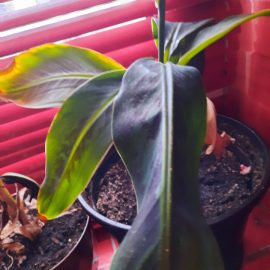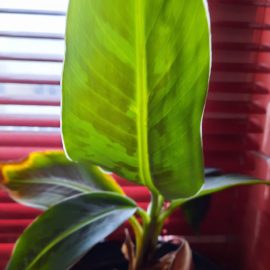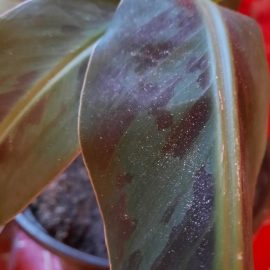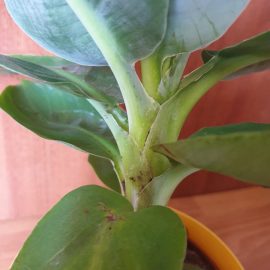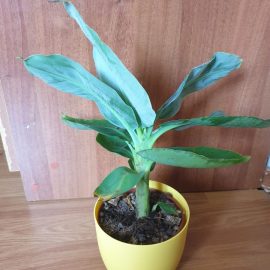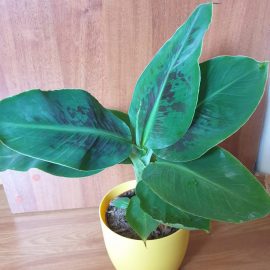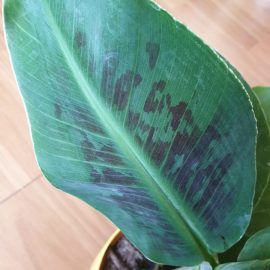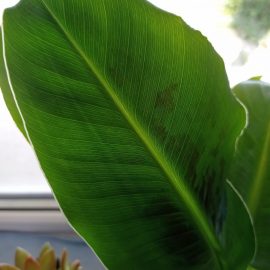Banana tree, plant care and growing guide
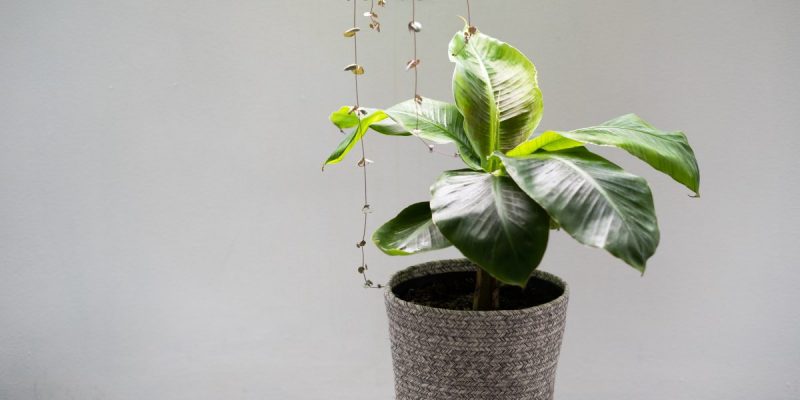
The Banana tree ( Musa spp. ) is a genus of large herbaceous plants in the Musaceae family. It includes around 70 species of plants that are native to the tropical areas of Asia, Africa, and Australia. Although their height is similar to trees, the banana stem is not a woody one, being made up of the leaves’ petioles. It has large and sharp leaves, that are up to 70 cm long. They are simple, unfolding in threads as the plant ages. The inflorescences have a conical shape and grow at the top of the stems. They grow on plants that are older than 3 years. The fruits ripen during the summer and are edible. In many countries, the banana tree can only bear fruit in greenhouses, where it has enough space and the right atmospheric conditions for optimal development. In the apartment, it can be used as a decorative green plant.
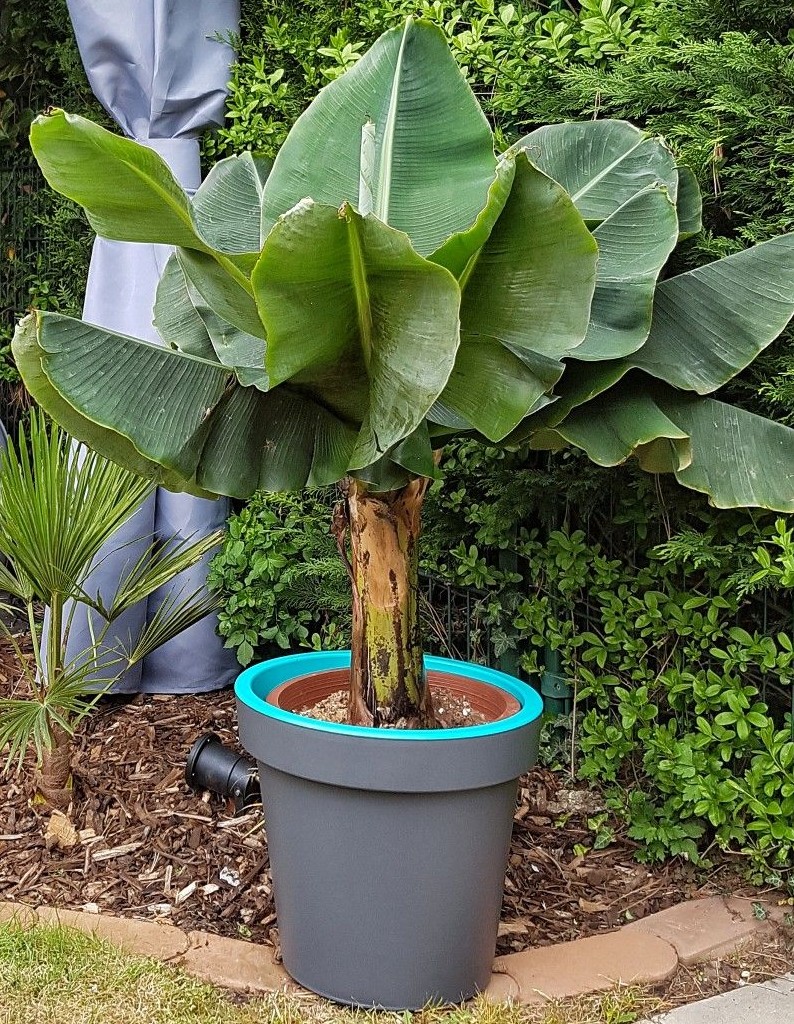
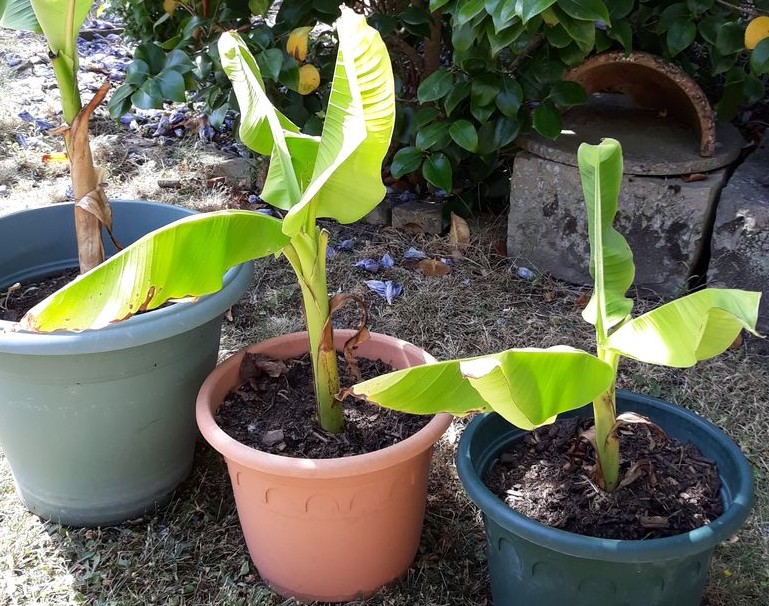
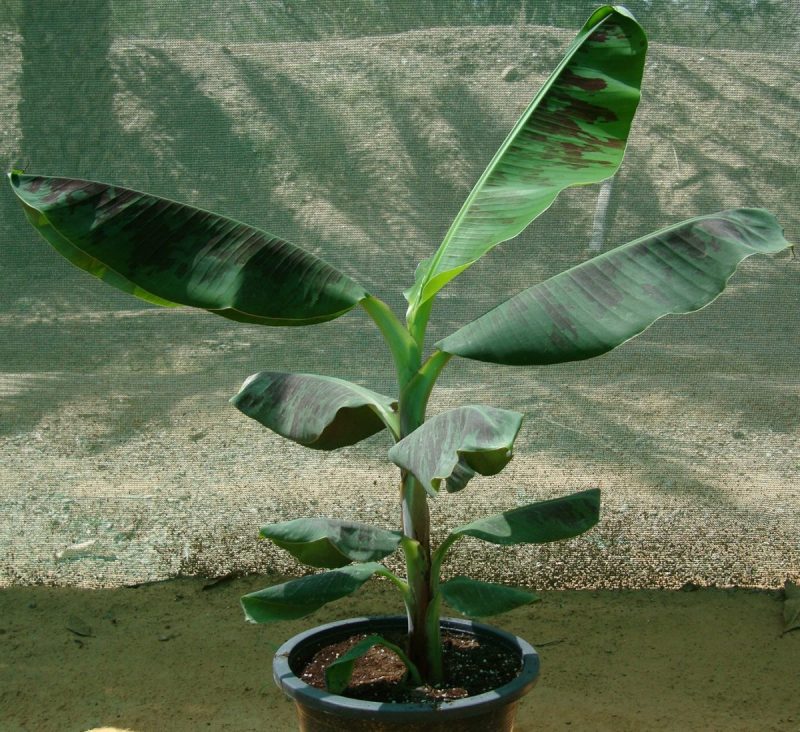
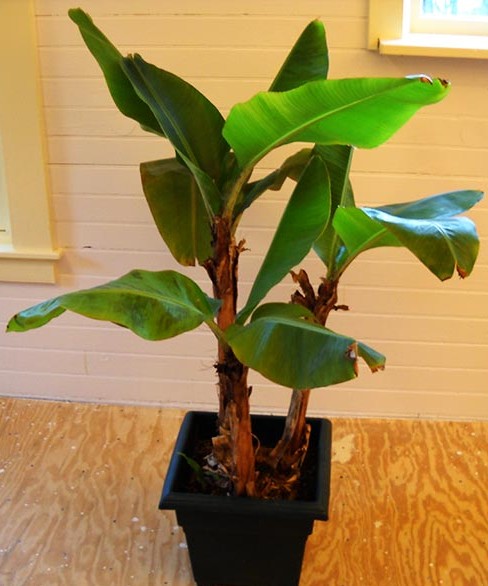
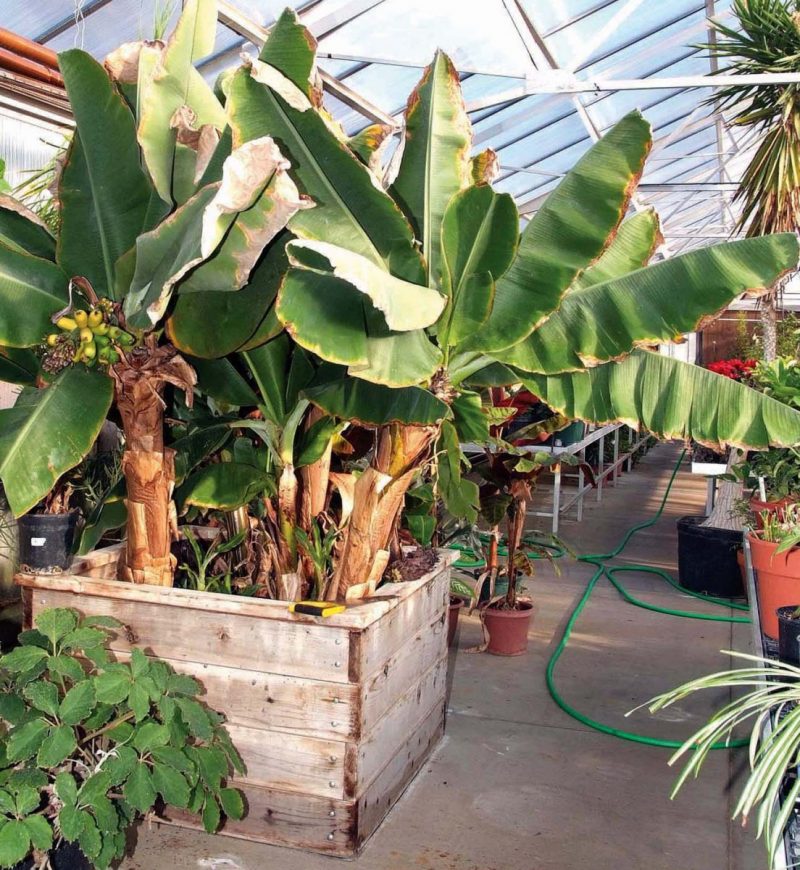
Species and varieties
Musa acuminata is the most common species grown for ornamental purposes because it adapts easily to indoor conditions.
Ensete ventricosum sin. Musa ensete is distinguished by its intense green foliage with a reddish-purple main vein.
Musa cavendishii has dark green leaves, decorated with reddish-brown spots.
Environmental conditions
Light. The banana tree needs abundant, direct sunlight, so it should be placed in a bright room.
Temperature. Being a plant native to the tropical climate, it grows at optimal temperatures of 22-24° C. Do not expose it to temperatures below 12° C.
Humidity. Regular spraying of the foliage is recommended, so as to ensure an atmospheric humidity of over 60%.
Substrate. Banana plants grow optimally in a substrate that contains peat, gravel, and garden soil.
Recommended products
-
You can find products on a different store
Change Store -
You can find products on a different store
Change Store -
You can find products on a different store
Change Store -
You can find products on a different store
Change Store -
You can find products on a different store
Change Store -
You can find products on a different store
Change Store -
You can find products on a different store
Change Store -
You can find products on a different store
Change Store -
You can find products on a different store
Change Store -
You can find products on a different store
Change Store -
You can find products on a different store
Change Store -
You can find products on a different store
Change Store -
You can find products on a different store
Change Store -
You can find products on a different store
Change Store -
You can find products on a different store
Change Store -
You can find products on a different store
Change Store -
You can find products on a different store
Change Store -
You can find products on a different store
Change Store -
You can find products on a different store
Change Store -
You can find products on a different store
Change Store -
You can find products on a different store
Change Store -
You can find products on a different store
Change Store -
You can find products on a different store
Change Store -
You can find products on a different store
Change Store
Watering
During the vegetative growth period (spring-summer), watering should be done moderately, so that the substrate is kept moist, but never too wet. In winter, the watering frequency must be reduced, and you should wait for the surface of the substrate to dry before watering the plant again.
Fertilization
During the growing season, from May to October, you can apply a liquid fertilizer for green plants.
Recommended products
-
You can find products on a different store
Change Store -
You can find products on a different store
Change Store -
You can find products on a different store
Change Store -
You can find products on a different store
Change Store -
You can find products on a different store
Change Store -
You can find products on a different store
Change Store -
You can find products on a different store
Change Store -
You can find products on a different store
Change Store -
You can find products on a different store
Change Store -
You can find products on a different store
Change Store -
You can find products on a different store
Change Store -
You can find products on a different store
Change Store -
You can find products on a different store
Change Store -
You can find products on a different store
Change Store -
You can find products on a different store
Change Store -
You can find products on a different store
Change Store -
You can find products on a different store
Change Store -
You can find products on a different store
Change Store -
You can find products on a different store
Change Store -
You can find products on a different store
Change Store -
You can find products on a different store
Change Store -
You can find products on a different store
Change Store -
You can find products on a different store
Change Store -
You can find products on a different store
Change Store
Repotting
The banana tree needs to be repotted annually, in spring.
Propagation
The banana plant can be propagated by detaching the shoots that appear at the base of the mother plant after it has flowered.
Recommended products
-
You can find products on a different store
Change Store -
You can find products on a different store
Change Store -
You can find products on a different store
Change Store -
You can find products on a different store
Change Store -
You can find products on a different store
Change Store -
You can find products on a different store
Change Store -
You can find products on a different store
Change Store -
You can find products on a different store
Change Store -
You can find products on a different store
Change Store -
You can find products on a different store
Change Store -
You can find products on a different store
Change Store -
You can find products on a different store
Change Store -
You can find products on a different store
Change Store -
You can find products on a different store
Change Store -
You can find products on a different store
Change Store -
You can find products on a different store
Change Store -
You can find products on a different store
Change Store -
You can find products on a different store
Change Store -
You can find products on a different store
Change Store -
You can find products on a different store
Change Store -
You can find products on a different store
Change Store -
You can find products on a different store
Change Store -
You can find products on a different store
Change Store -
You can find products on a different store
Change Store
Diseases and pests
The pests that can infest banana trees are mites, thrips, mealybugs, or scale insects. Insecticide treatments should be carried out preventively.
In addition:
- in summer, from the end of May and until September, the banana tree can be taken outdoors, in a place with direct sunlight.
- it is a monocarpic plant. After flowering, the mother plant dies, leaving in its place the shoots grown at its base.














































































































































































































































































































































































































































